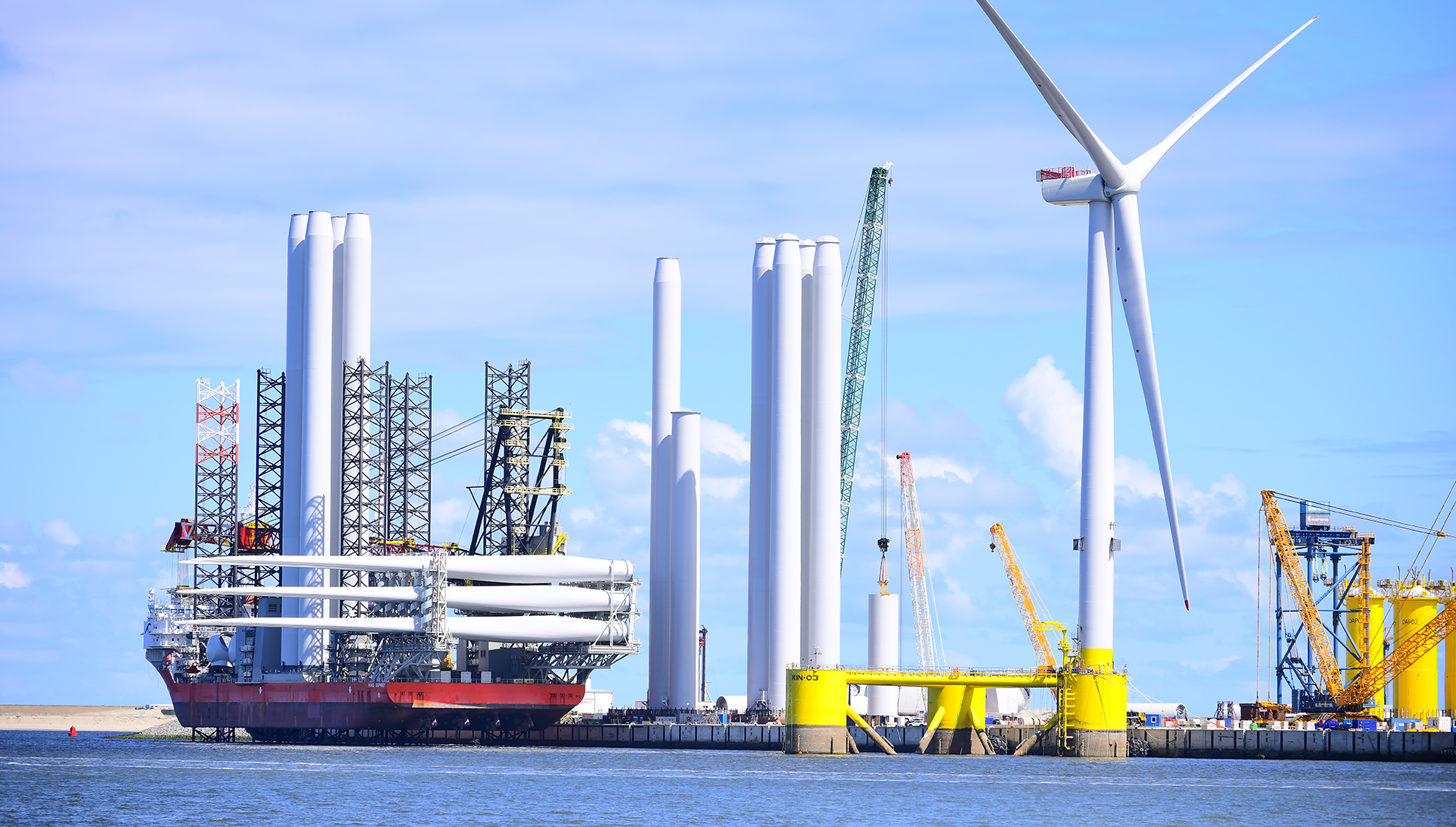Offshore wind: How to create a strong business case for your port

The offshore wind industry is growing, but that growth is reliant on ports having the right facilities and infrastructure to support it. That is creating a huge opportunity for ports that can make the necessary developments to capitalise on a continually expanding market.
However, if you can’t translate your ambitions, targets, and potential pipeline for offshore wind projects into concrete examples of port demand, you will struggle to develop a robust business case for offshore wind.
Many ports that have successfully capitalised on this emerging market benefit from having an opportune location for offshore wind activity. Others have entered the market from a manufacturing perspective by providing OEM backing to developers.
To build a solid business case you need to understand the potential role your port could play and find a way to develop it in a staged approach that allows you to service the wind sector as well as any cargo or passenger traffic commitments that also bring you revenue.
Our North Seas offshore wind port study 2030–2050 identified five challenges for the development of port infrastructure to support offshore wind:
- Demand uncertainty
- Non-viable business cases
- Technical development risks
- Competition for space
- Incentive mismatch
In this article, we’ll explore ways you can overcome those challenges and build your business case.
Understand your specific offshore wind potential to limit uncertainty
First, you need to establish the actual opportunity of offshore wind for your port, and how it compares to other markets and revenue streams.
That means looking at the trajectory of your current contracts, the offshore wind potential in your area, and at the readiness of neighbouring and competing ports. All of this will help establish how competitive the market will be for you.
For example, you may have an excellent location to facilitate offshore wind projects and a good amount of space that can be developed. But if another port in your area is already established as a wind port, it might be worth focusing on a specific alternative part of the offshore wind market, or perhaps in other areas.
Alternatively, if there are no established wind ports in your area, you may have the ideal opportunity to establish your port as an offshore wind hub.
Gathering as much information as possible is the best way to mitigate uncertainty and to form the foundation of a robust business case. Technical and commercial feasibility studies and good collaboration with all your key stakeholders will help maintain visibility throughout the process and set your port up for success.
This first phase is all about confirming and firming the opportunity, by getting a proper understanding of market needs, drivers, and the strategic logic and commercial development options at hand.
Make sure offshore wind works alongside your other interests
With such high demand for port space it’s crucial to ensure any new investment in port infrastructure works in conjunction with your other port activities and helps you maintain diverse revenue streams as markets and demands shift.
In terms of the energy market specifically, there is a clear trend away from coal, oil, and gas towards more renewable energy sources like wind and hydrogen. If you can factor both of these markets into your port master plan, you’ll be in a strong position to create long-term revenue opportunities.
There’s a lot of emphasis on meeting staging, assembly, and manufacturing requirements for offshore wind as these have the highest port requirements. But even if you don’t have the space or infrastructure to meet these requirements, there are still opportunities in the offshore wind market that you could seize.
Often a multi-port strategy is required to service a project, which includes supporting installation vessels, providing long-term or temporary storage, and shipping components. Offshore wind farms also need ports to serve as bases for their operation and maintenance.
Plus, new practices are constantly being developed to help lessen port requirements for offshore wind, like alternative launching facilities, floating cranes, and methods to spread the load on the quay.
By fully investigating your port’s potential, you might find the opportunity of offshore wind more achievable that it seems. Identifying a comprehensive list of options and evaluating them with a multi-criteria analysis will help you to pinpoint the right options for your port.
Ports must offer a strong business case – grounded in specific ambitions, plans, and projects – to attract investment and prepare for offshore wind.
Showcase clear financial viability to secure offshore wind investment
Obtaining funding for a wind port development can be a daunting prospect but at Royal HaskoningDHV, we’ve established a clear roadmap to support you as you seek to capitalise on this market.
Our starting point is to determine the technical specifications your port needs to meet and establish how much investment it will take to achieve. This means working out what’s possible at your port, what you need to do to get there, and how that translates to capital and operational expenditure.
This can be a one off greenfield or brownfield investment, but most likely will be an investment spread in several phases over time to assure optimal utilisation and moving with market and technology demand.
Turbine sizes and the corresponding components dimensions continue to increase. The size of both components, projects and vessels is expected to grow over time, leading to increased requirements for quay space and berth capacity in the future.
Navigating this ever-changing environment can be challenging as the capital investment can be significant and it is important that any new or adapted infrastructure meets the right requirements of future projects. A phased approach to port infrastructure investment is recommended to ensure that your facilities are in line with actual needs, without over-investing in the early stages.
From here, we can estimate the potential return on investment you could see from the offshore wind market. Additionally, cargo and revenue streams from other activities can also be added to the financial model.
The way you present your business case to stakeholders and investors is also crucial. While establishing current economic viability and value is imperative, it’s also beneficial to look at how the market will expand in the future.
Royal HaskoningDHV is able to service the financial model for private investors and can also estimate economic value by conducting a societal cost benefit analysis which, together with an investor pack, can help to generate public financial support for your investment.
As the world continues to transition towards more renewable energy markets, the demand for offshore wind will continue to grow, too.
Seize the offshore wind opportunity to diversify your revenue streams
The sooner you get involved in the offshore wind market, the easier it will be to capitalise on it. Look at your location and the available space within your port to work out what role you can feasibly play.
Can your port’s dimensions support the infrastructure needed to handle large turbines and other components for offshore wind? Or is there another role you can take on that places less demand on your port?
For a deeper dive on the actions you can take to develop a wind port, take a look at the North Seas offshore wind port study 2030–2050. In it, we propose several short- and long-term solutions to support wind port development for public and industry players, and financial institutions.
You can also get in touch with our expert team to discuss whether offshore wind is a good fit for your port, and what your best next steps are.
![[object Object] [object Object]](https://www.royalhaskoningdhv.com/-/media/images/employees-profile-pics/w/walison-patrick.png?h=500&iar=0&w=500&hash=D1BB463D68A440DEFC86C3E0848A47B2)



